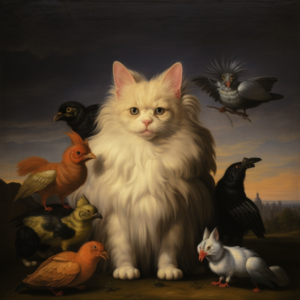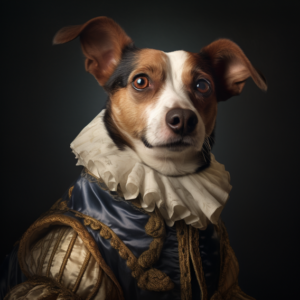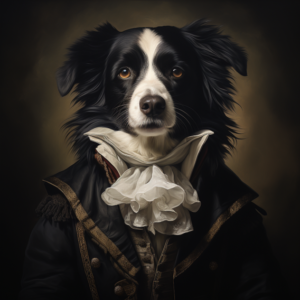The presence of pets in the lives of humans dates back thousands of years, and their significance extended far beyond mere companionship. In the realm of ancient art and culture, pets played a multifaceted role, serving as symbols, spiritual beings, and even status markers. Let’s embark on a journey through time to explore the roles that pets played in the art and culture of ancient civilizations.
Ancient Egypt: Pets as Divine Guardians
In ancient Egypt, the bond between humans and animals was deeply intertwined with religion and mythology. Cats, in particular, held a special place in Egyptian culture. The goddess Bastet, often depicted with the head of a lioness or a domestic cat, was the guardian of home, fertility, and protector against evil spirits. Cats were revered and even mummified upon their death.
One of the most iconic representations of cats in Egyptian art is the sculpture “Seated Cat” from the Middle Kingdom period (c. 2040–1782 BCE). This statue, made of wood and covered in a thin layer of gesso, captures the grace and mystique of cats in ancient Egyptian society.
Ancient Greece: Pets and Companionship
In ancient Greece, pets were valued for their companionship and loyalty. Dogs, in particular, were cherished for their role as hunting partners, guards, and symbols of fidelity. The philosopher Diogenes was often depicted with his loyal dog, emphasizing the bond between humans and animals.
One notable artwork from ancient Greece is the red-figure pottery painting known as “The Master of Animals” from the 6th century BCE. This motif frequently depicted a hero or deity flanked by animals, showcasing the human-animal connection in Greek culture.
Ancient China: Pets as Symbols of Prosperity
In ancient China, the presence of pets, particularly dogs and cats, was believed to bring good fortune and prosperity. Dogs were often associated with protection and loyalty, while cats were seen as guardians against evil spirits. These beliefs were reflected in Chinese art and folklore.
The artwork of the Tang dynasty, such as “Guardian Lion”, prominently featured lion-like mythical creatures known as “shishi” or “fu lions.” These guardian lions were often placed at the entrances of palaces and temples to ward off malevolent forces and protect the premises.
Ancient Rome: Pets as Status Symbols
In ancient Rome, pets were not only beloved companions but also status symbols. Wealthy Romans often owned exotic pets such as birds, monkeys, and even lions. These animals were displayed as a sign of opulence and power.
One striking example of the representation of pets in ancient Roman art can be found in the mosaic known as the “Alexandria Mosaic” from the 2nd century CE. This mosaic features a variety of animals, including birds and a dog, illustrating the fascination Romans had with their animal companions.
Across the ancient world, pets held diverse roles and meanings in art and culture. They were protectors, companions, symbols of status, and even bridges to the divine. These historical representations of pets remind us of the enduring connection between humans and animals, a bond that transcends time and continues to be celebrated in contemporary society. As we journey further into the past, we’ll uncover more intriguing stories of pets in art and culture.



